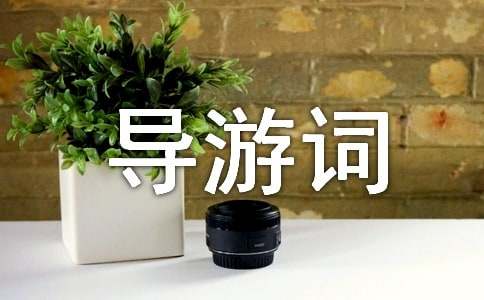颐和园昆明湖导游词范文示例
篇一:颐和园 昆明湖景区 导游词

颐和园 昆明湖景区 导游词
(开场白,昆明湖名称含义,西堤,东堤,湖中诸岛,结束语)
颐和园的园林区分为万寿山景区和昆明湖景区,接下来我主要介绍的是昆明湖景区。
昆明湖源于汉武帝在长安城开凿昆明池操练水兵的典故,当时汉武帝派使臣前往身毒,今印度一带,在昆明国的滇池被阻,汉武帝大怒决定征服昆明国,于是在长安城内挖了昆明池操练水兵,乾隆皇帝借此典故将西湖命名为昆明湖,也曾在此操练水兵寓意自己也是像汉武帝一样,是治理国家的明君,开疆扩土的英主。
穿过仁寿殿的两座假山,一碧万顷的昆明湖就映入眼帘,放眼望去,远处玉泉山的玉峰塔犹如建造园内,西山群峰也尽收眼底,丰富了园内景观,组成了以昆明湖为近景,西堤为中景,玉峰塔及西山群峰为远景的山水画卷,这是我国典型“借景”造园手法。西堤上有六座形态各异的小桥,分别是界湖桥,豳风桥,玉带桥,镜桥,练桥,柳桥。
界湖桥是西堤六桥中最北面的一座,位于昆明湖(内湖),西湖(外湖)与后湖(后河)的分界处,故名界湖桥。清漪园时期此桥名柳桥,而最南端的柳桥称界湖桥,光绪年间重建时将两桥名互换。
豳风桥在清漪园时期称桑苧桥,光绪年间重建后,慈禧太后为避已故咸丰皇帝的名讳奕zhu也为避其谐音如丧主,将其改为豳风桥。豳风二字出自《豳风七月》,描写的是百姓耕田采桑的劳动场景。
玉带桥既是昆明湖的入水口也是帝后们乘船从清漪园去静明园的必经之路,为了满足行船的需要设计成了高拱形单孔石桥。因形似玉带而得名,东西两侧的桥身上刻有乾隆皇帝亲笔撰写的`对联和“玉带桥”三字。
镜桥名称出自于唐代大诗人李白“两水夹明镜,双桥落彩虹。”的意境。
练桥名称出自于南朝诗人谢朓的诗句“余霞散成绮,澄江静如练。”的意境,练是白色的丝织品,寓意此桥架在澄静如练的昆明湖上。
在练桥和镜桥之间还有一个建筑是景明楼,景明楼的名称出自宋代大文学家范仲淹的名著《岳阳楼记》中“至若春和景明,波澜不惊,上下天光,一碧万顷。”建筑形式是按照元代著名画家赵子昂的名画《荷亭纳凉图》中的画境创造的。过了东西堤的交界处绣漪桥,我们就来到了东堤,东堤上的主要建筑是昆仑石碑,廓如亭,十七孔桥,铜牛,文昌阁,耶律楚材祠。
昆仑石碑共有两块,一块立于绣漪桥北面,石碑四面镌刻着乾隆皇帝赞美长河两岸风光的御制诗,一块立于铜牛北
面,石碑四面镌刻着乾隆皇帝赞美昆明湖东岸景观的御制诗。
沿着堤岸向北走看到的亭子就是廓如亭,它是我国古典园林中最大的一座观景亭,建筑面积约300平方米,在这里观景视野开阔,所以叫廓如亭,又因它是八面重檐攒尖顶,故又俗称八方亭。
连接廓如亭和南湖岛的就是十七孔桥,全长150米,宽8米,仿照金代卢沟桥建造,望柱上共雕刻有544只形态各异的狮子,数量远远多于卢沟桥。
铜牛位于廓如亭的北侧,铜牛是镇水之物,为了阐明其用意,乾隆皇帝还特意撰写了四言铭文《金牛铭》,用篆体刻在金牛背上,以铜牛镇水源于大禹治水的故事。
东堤最北侧的建筑就是文昌阁了,是颐和园六座城关(六座城关的名字)中最大的一座,阁内供奉文昌帝君坐像,它与万寿山西侧的宿云檐城关东西相对,一共文昌帝,一共关羽,左文右武,寓意大清江山“文武辅弼”。
介绍完了西堤东堤接下来我们说一下昆明湖中的大小岛屿。
在文昌阁西北是由大小两座岛屿组成的知春岛,大岛上建有知春亭,亭名源于宋代大文濠苏东坡《惠崇春江晚景》诗中“竹外桃花三两枝,春江水暖鸭先知。”的意境。
南湖岛是昆明湖中最大的岛屿,通过十七孔桥与东堤相连,南湖岛上有涵虚堂和广润灵雨祠,涵虚堂原名望蟾阁,乾隆年间仿照湖北武昌黄鹤楼建造,后来因为南湖岛基础逐渐下沉,嘉庆便把它改为一层的涵虚堂,光绪年间慈禧曾在此检阅水师学堂的官兵进行的阵法演练。广润灵雨祠俗称龙王庙,宋真宗时称广润祠,乾隆年间改为现名。其香火延续到清末,现在看到的是1986年重修的。
凤凰墩位于昆明湖最南端的水域中是仿造江苏无锡运河中的黄埠墩建造的,凤凰墩上原有一座凤凰楼,它与南湖岛上的龙王庙相对,寓意“龙凤呈祥”。
藻鉴堂位于西堤南面湖泊中,古人把选拔人才成为澡鉴,乾隆皇帝借以寓意人才难得,清漪园时期内有很多真宝,1903年重修后,将其改为欧陆风情,并配有西洋厨师,慈禧在这里宴请或外驻华公使。
治镜阁位于昆明湖西面水域,原本是一座圆形的水上城楼,但由于年久失修,现在已经是一座水中荒岛了。
整个昆明湖一池三山的格局寓意这里是人间仙境。倘若在昆明湖内泛舟,彷佛置身于仙境,西面西山若隐若现,北面万寿山一片葱郁中流露出万丈金光,东堤金牛神采奕奕,真是一种绝美的享受。(结束语 略)
篇二:英文导游词:颐和园昆明湖景区
签10.颐和园昆明湖景区(昆明湖名称含义;西堤;东堤;湖中诸岛)
Kunming Lake covers the three quarters of the whole Summer Palace. the name of the lake came from “Kunming Pool” in Changan, made by Emperor Wu Di in the Han Dynasty for training his soldiers. Qing Emperor Qianlong just followed the example of Han Wu Di and gave the name Kunming Lake.
To the west of Kunming Lake, there is a long causeway on the Lake, which is called “West Dyke”, patterned after the Su Dyke in West Lake in Hangzhou. Along the Dyke there are six bridges separate the lake into two parts. The Jade Belt Bridge is the most beautiful bridge among the six bridges in the west dyke. Its high-arched body looks just like a jade belt, hence its name Jade Belt Bridge. The three Chinese characters, “Yu Dai Qiao” was in Emperor Qianlong’s handwriting. Most of the name of the Bridges have been derived from ancient poems to describe the beautiful surroundings, such as the Lake Boudary Bridge, the Local Song Bridge, the Mirror Bridge, the White Sike Bridge and the Willow Bridge.
Compare with the West Dyke, there also have many beatiful scenic spots in the East Dyke, such as the 17-Arch Bridgem the Spacious Pavilion, the Bronze Ox, the Heralding Spring Pavilion and the Wen Chang Belvedere.
The 17-Arch Bridge is the largest bridge in the Summer Palace. It links East Dyke at its eastern end, and connect South Lake Island at its western end. It is 150 meters long and 8 meters wide with 17 arches. There are 544 stone lions in different sizes and postures carved on the top of the balusters. Seen from a distance, it looks like a rainbow hanging across the water on the lake. The 17-Arch Bridge was first built in 1750, and was imitation of Marco Polo Bridge, but this bridge is more beautiful and have more stone lions. The number 17 was adopted because when seen from either the left or right, the ninth arch is in the middle, and in the old days, the number nine was the lucky number and favorite number in Chinese numerals.
The South Lake Island is the biggest island on Kunming Lake. It is located on the eastern part of Kunming Lake and linked with the East Dike by the 17-Arch Bridge. On the northern part of the South Lake Island, there is a big hall with a platform in the front. This was the place where Empress Dowager Cixi watched the navy training on the lake. The Temple of the Dragon King was built on the south Lake Island. Inside the temple, there is a statue of the Dragon King.The Temple of the Dragon King was built here, not only with the purpose of decorating the island, but also to control water. It is said that in 1787 Emperor Qianlong, at the age of 80, came here in person to pray for rain. Soon after, rain poured down in torrents that night. The next day, the emperor came here again to have a big ceremony to show his thanks to the Dragon King. Until the end of the Qing Dynasty, the emoperor came to the Temple of the Dragon King every year in person or sent his high ranking official to come here to worship.
The Spacious Pavilion is the biggest extanted ornamental Pavilion in the Ancient garden of China. It is located at the eastern end of the 17-Arch Bridge. It’s an eight-sided and double-eaved pavillion with an area of over 300 square meters that provided a wide field of vision, so it got the name Spacious Pavilion.
To the east of the 17-Arch Bridge we can see a Bronze Ox. In ancient China, the
ox was used as a symbol of flood control. The 80-word “Golden Ox Inscription”, written by Emperor Qianlong was cast on the back of the Bronze Ox, just toexplain its presence.
Yelu Chucai was a famous politician of the Yuan Dynasty and also a famous Mongolian general. During his lifetime, he made great contributions to the preservation of China’s interests. Yuan Emperor put him in an important position in the Yuan Court. Yelu Chucai died in 1244, He was buried at the foot of Jar Hill, and a temple was built to commemorate him. Yelu Chucai Temple consists of three parts: the coffin chamber of Yelu Chucai, the memorial halls and his stone statue.
Wen Chang Belvedere is a two-story tower building in the shape of a city gate. Inside the building, the bronze statue of the God of Literature Prosperity is enshrined.
【颐和园昆明湖导游词示例】相关文章:
颐和园昆明湖景点导游词03-19
颐和园导游词精选示例04-01
颐和园昆明湖导游词四年级范文示例05-09
颐和园导游词参考示例03-20
颐和园导游词范文示例05-04
颐和园导游词简短示例05-05
颐和园导游词作文示例05-04
颐和园导游词200范文示例05-04
北京颐和园英文导游词示例05-04